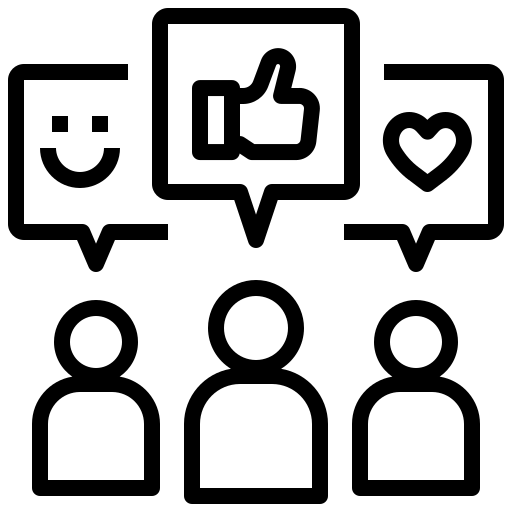
Getting to your first 100 paying customers is one of the hardest yet most crucial milestones for any SaaS startup. It validates your idea, generates revenue, and provides real-world feedback that shapes your product. But in a crowded market, how do you convince those first 100 users to pay for your solution? Let’s break it down step by step.
1. Define Your Ideal Customer Profile (ICP)
Before you start selling, you need to know who you’re selling to. Defining your Ideal Customer Profile (ICP) helps you focus your efforts on the right audience. Consider:
- Industry: Which sectors have the biggest pain points your SaaS solves?
- Company size: Are you targeting startups, mid-market businesses, or enterprises?
- Job roles: Who is the decision-maker? CEOs? CTOs? Marketing managers?
- Pain points: What specific problems does your product solve for them?
A well-defined ICP prevents you from chasing unqualified leads and wasting resources on the wrong audience.
2. Leverage Your Personal & Professional Network
Your first paying customers are likely closer than you think. Tap into your personal network—former colleagues, industry peers, and LinkedIn connections. A simple message like:
“Hey [Name], I’ve built a SaaS product that helps [target audience] solve [specific problem]. I’d love to get your feedback and see if it might be a fit for your team. Can we chat for 15 minutes?”
This approach is warmer than cold outreach and can lead to referrals even if the person isn’t a direct buyer.
3. Offer Exclusive Early-Bird Pricing or Lifetime Deals
People love being early adopters, especially when they get a great deal. Offering early-bird discounts or lifetime deals (LTDs) can incentivize users to pay upfront.
- Use platforms like AppSumo or Product Hunt to launch LTDs.
- Offer “Founding Member” status with perks like premium support or feature influence.
- Create urgency with limited-time pricing (e.g., “Only 50 spots available at this rate”).
4. Nail Your Cold Outreach Strategy
Cold emails and LinkedIn DMs still work—if done right. Avoid generic, spammy messages. Instead:
- Personalize your outreach. Reference their company, challenges, or recent events.
- Keep it short and valuable. No one reads a wall of text.
- Make the ask simple. Suggest a 15-minute call, not a full demo.
Example cold email:
Subject: Quick Question About [Their Business Pain Point]
Hi [First Name],
I noticed that [Company] is growing fast, and I imagine scaling [specific process] might be challenging. I built [Your SaaS Name] to help teams like yours [solve specific problem] without [common frustration].
Would love to share how it works—can we schedule a quick call this week?
Best,
[Your Name]
5. Partner with Influencers and Micro-Communities
Rather than spending heavily on ads, collaborate with industry influencers and micro-communities where your target users hang out.
- Engage in relevant Slack groups, Facebook groups, and LinkedIn communities.
- Partner with niche YouTube creators, bloggers, and podcast hosts.
- Offer influencers free access in exchange for a review or a mention.
Authentic recommendations from trusted voices can drive more conversions than paid ads.
6. Leverage Content Marketing & SEO
Organic traffic takes time but pays off in the long run. Start by:
- Publishing high-value blog posts addressing your target audience’s pain points.
- Creating comparison articles (e.g., “Best Alternatives to [Competitor] in 2024”).
- Optimizing your landing pages with SEO-friendly headlines, testimonials, and CTAs.
SEO-friendly blog topics:
- “How to Automate [Industry Task] and Save Hours Every Week”
- “The Top [X] SaaS Tools for [Specific Use Case]”
- “How We Helped [Company] Reduce Costs by 30% with [Your Product]”
7. Get on Product Hunt & Hacker News
If your SaaS is B2B or developer-focused, platforms like Product Hunt and Hacker News can give you a massive boost.
- Product Hunt: Launch with engaging visuals, a clear value proposition, and active comment engagement.
- Hacker News: Share your startup journey, not just a promo. Authentic storytelling works best.
8. Run Targeted Ads (But Smartly)
Paid ads work—but only if you do them right. Instead of wasting money on broad targeting, focus on:
- Retargeting website visitors with Facebook and LinkedIn ads.
- Google Search Ads targeting high-intent keywords.
- Reddit and Twitter Ads for niche audiences.
Start small, test different creatives, and double down on what converts.
9. Get Testimonials & Case Studies ASAP
Early customers become your biggest marketing asset. Ask for testimonials and case studies to build credibility.
How to get testimonials:
- Offer a discount in exchange for feedback.
- Record a quick Zoom call with happy users.
- Feature customer stories on your website and LinkedIn.
10. Optimize for Word-of-Mouth & Referrals
Once you land a few happy customers, get them to bring in more.
- Create a referral program (e.g., “Get 1 month free for every referral”).
- Encourage social sharing with incentives.
- Offer team discounts (e.g., “Add your team members at 50% off”).
11. Track Metrics & Iterate
Finding your first 100 customers isn’t about luck—it’s about testing, tracking, and optimizing. Key metrics to track:
- Conversion rates (Are people signing up or dropping off?)
- Customer Acquisition Cost (CAC) (Are your efforts cost-effective?)
- Retention & Churn (Are customers sticking around?)
Use tools like Google Analytics, Mixpanel, or Amplitude to monitor and refine your strategies.
Final Thoughts: Persistence Wins
Your first 100 paying customers won’t come overnight. Some strategies will work better than others, and that’s okay. The key is to experiment, listen to your audience, and double down on what works.
Start with your network, offer early incentives, master outreach, and leverage organic and paid strategies. Once you have 100 customers, scaling to 1,000 becomes much easier.
Now go out there and get your first 100 customers!
Contact us at: https://lnkd.in/gihWy6sk.